Waarom kiezen voor een flagstoneterras?
Als het gaat om het verfraaien van uw buitenruimte, bieden een paar opties de tijdloze aantrekkingskracht en duurzaamheid van een plavuizen terras. Flagstone-terrassen zijn niet alleen visueel opvallend met hun natuursteentexturen en aardse kleuren, maar ze doorstaan ook de tand des tijds, waardoor ze een populaire keuze zijn voor huiseigenaren die zowel schoonheid als functionaliteit in hun tuin willen.
Overzicht van flagstone-patio's: een tijdloze en duurzame buitenoptie
Fagstone is een sedimentair gesteente dat doorgaans in lagen wordt opgesplitst, waardoor het een natuurlijke platte vorm krijgt, ideaal voor het creëren van paden en patio's. De unieke kenmerken van elke steen, inclusief de textuur, kleur en dikte, creëren een unieke uitstraling die niet kan worden nagebootst met synthetische materialen. Of u nu op zoek bent naar een rustieke, natuurlijke uitstraling of een meer verfijnd, elegant ontwerp, een plavuizen terras kan worden aangepast aan uw specifieke stijl en behoeften.
Voordelen van Flagstone:
- Duurzaamheid: Flagstone staat bekend om zijn langdurige karakter. Het is bestand tegen barre weersomstandigheden, van verzengende zomers tot ijskoude winters, zonder te barsten of te vervagen.
- Natuurlijke schoonheid: De aardetinten en organische vormen van plavuizen voegen een natuurlijke charme toe aan elke buitenruimte en passen naadloos bij tuinen, gazons en andere landschapselementen.
- Veelzijdigheid: Flagstone kan in verschillende ontwerpen worden gebruikt, van eenvoudige, relaxte arrangementen tot meer ingewikkelde, geometrische patronen. Het kan ook worden gecombineerd met andere materialen zoals grind, kiezelstenen of straatstenen om een unieke uitstraling te creëren.
- Weinig onderhoud: In tegenstelling tot hout of beton vereist plavuizen minimaal onderhoud. Het rot niet, vervormt niet en heeft geen last van insectenschade, waardoor het een praktische keuze is voor drukke huiseigenaren.
Flagstone versus andere terrasmaterialen: de juiste keuze maken
Wanneer u terrasmaterialen overweegt, kunt u ook opties tegenkomen zoals beton, baksteen of straatstenen. Elk van deze materialen heeft zijn voordelen, maar plavuizen valt op om verschillende redenen:
| Materiaal | Voordelen | Nadelen |
|---|---|---|
| Fagstone | Natuurlijke schoonheid, duurzaamheid, antislip, weinig onderhoud | Hogere initiële kosten, vereist meer installatietijd |
| Concreet | Betaalbaar, veelzijdig, snelle installatie | Kan na verloop van tijd barsten, vereist regelmatige afdichting, minder natuurlijk uiterlijk |
| Baksteen | Klassieke uitstraling, duurzaam, gemakkelijk te repareren | Gevoelig voor mos en meeldauw, beperkte kleuropties |
| Straatstenen | Grote verscheidenheid aan kleuren en vormen, eenvoudig te installeren | Kan in de loop van de tijd verschuiven, vereist regelmatig onderhoud |
Hoewel plavuizen hogere initiële kosten kunnen hebben in vergelijking met materialen zoals beton of straatstenen, maken de voordelen op de lange termijn, vooral in termen van duurzaamheid en esthetische aantrekkingskracht, het op de lange termijn vaak een kosteneffectievere optie.
Wat u moet weten voordat u begint: tijd, budget en hulpmiddelen
Het installeren van een plavuizen terras is een dankbaar project, maar het vereist een zorgvuldige planning en voorbereiding. Voordat u in het installatieproces duikt, is het belangrijk dat u een duidelijk beeld heeft van de benodigde tijd, het budget en de benodigde hulpmiddelen.
Tijd: Afhankelijk van de grootte en complexiteit van uw terrasontwerp kan de installatie enkele dagen tot enkele weken duren. Het is belangrijk om realistische verwachtingen te scheppen en dienovereenkomstig te plannen, vooral als u binnen een specifiek tijdsbestek werkt of als het project op een bepaalde datum moet zijn voltooid.
Begroting: De kosten voor het installeren van een plavuizen terras kunnen sterk variëren, afhankelijk van factoren zoals de grootte van het terras, het type plavuizen dat wordt gebruikt en of u het werk zelf doet of een professional inhuurt. Gemiddeld kunt u verwachten dat u tussen de €15 en €30 per vierkante meter uitgeeft aan materialen en arbeid. Dit kan echter worden verminderd als u ervoor kiest om het project zelf aan te pakken.
Hulpmiddelen: Hier is een lijst met essentiële hulpmiddelen die u nodig heeft voor de installatie:
- Schop en houweel voor opgraving
- Meetlint en markeringsverf voor lay-out
- Kruiwagen voor het vervoeren van materialen
- Rubberen hamer voor het zetten van stenen
- Waterpas voor het garanderen van gelijkmatige oppervlakken
- Aanstamper voor het verdichten van de basis
- Metselzaag voor het zagen van stenen (indien nodig)
- Veiligheidsuitrusting (handschoenen, bril, kniebeschermers)
Zorg ervoor dat u, voordat u met de installatie begint, al het benodigde gereedschap bij de hand heeft om vertragingen tijdens het project te voorkomen. Overweeg bovendien om gespecialiseerde apparatuur zoals een steenzaag te huren als u er nog geen heeft, omdat deze gereedschappen duur kunnen zijn om direct aan te schaffen.
-
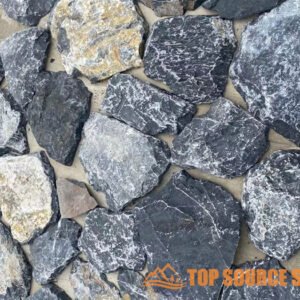 Groothandel losse willekeurige stenen muurbekleding
Groothandel losse willekeurige stenen muurbekleding -
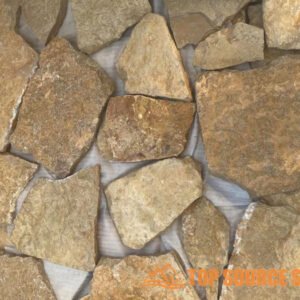 Groothandel natuurlijke willekeurige losse stenen bekleding
Groothandel natuurlijke willekeurige losse stenen bekleding -
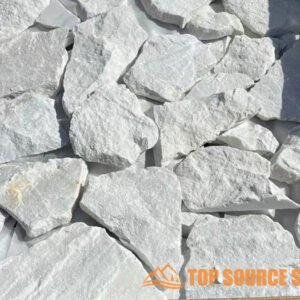 Willekeurige losse stenen bekleding
Willekeurige losse stenen bekleding -
 Grijze kwartsiet willekeurige losse wandbekleding
Grijze kwartsiet willekeurige losse wandbekleding -
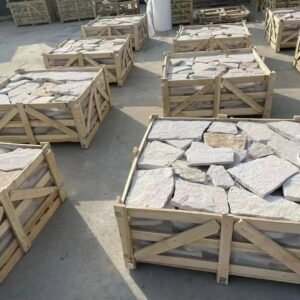 Exterieur witte zandsteen willekeurige losse stenen muurbekleding
Exterieur witte zandsteen willekeurige losse stenen muurbekleding -
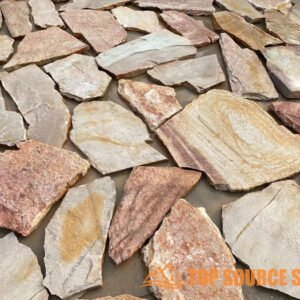 Natuurlijke willekeurige losse stenen panelen voor vloertoepassing
Natuurlijke willekeurige losse stenen panelen voor vloertoepassing -
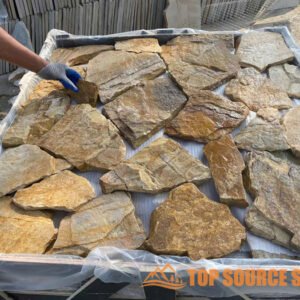 Natuurlijke losse stenen muurbekleding voor wanddecoratie
Natuurlijke losse stenen muurbekleding voor wanddecoratie -
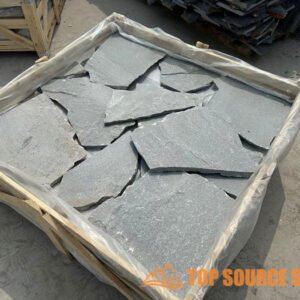 Natuurlijke willekeurige losse stenen wandbekledingspaneel voor binnen en buiten
Natuurlijke willekeurige losse stenen wandbekledingspaneel voor binnen en buiten
-
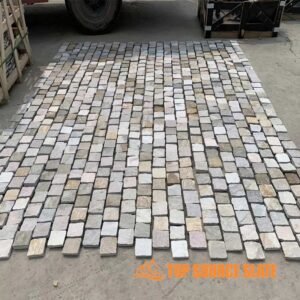 Beige kwartsiet gek patroon plavuizen uit China
Beige kwartsiet gek patroon plavuizen uit China -
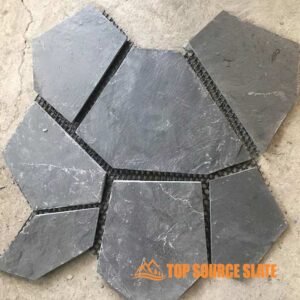 Zwarte leisteen onregelmatige willekeurige gekke bestrating plavuizen
Zwarte leisteen onregelmatige willekeurige gekke bestrating plavuizen -
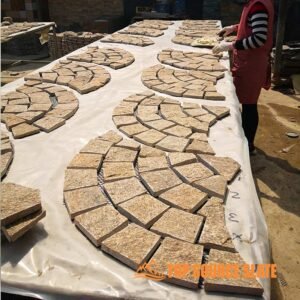 Natuursteen gekke bestrating onregelmatige leistenen plavuizen voor landschap
Natuursteen gekke bestrating onregelmatige leistenen plavuizen voor landschap -
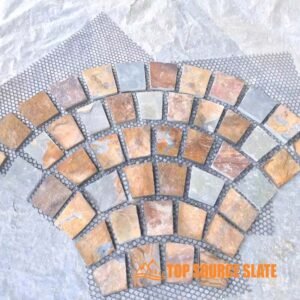 Chinese veelkleurige leisteen plavuizen vloermat mesh steen
Chinese veelkleurige leisteen plavuizen vloermat mesh steen -
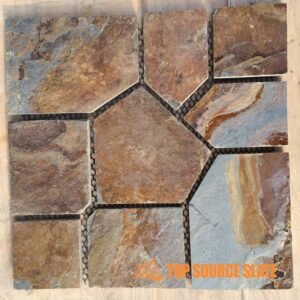 Leisteen gekke onregelmatige plavuizen mesh loopbrug bestratingsafwerkmachines
Leisteen gekke onregelmatige plavuizen mesh loopbrug bestratingsafwerkmachines -
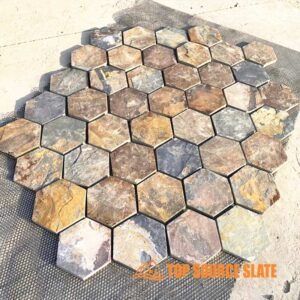 Onregelmatige leistenen netvlagstraatsteen
Onregelmatige leistenen netvlagstraatsteen -
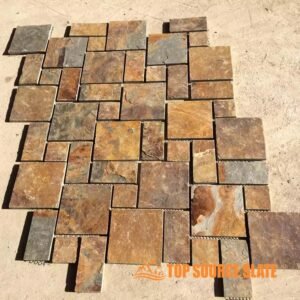 Natuurlijke roestige stenen maasvormige vlag loopbrugsteen
Natuurlijke roestige stenen maasvormige vlag loopbrugsteen -
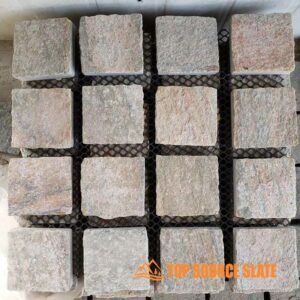 Vierkante stenen vloertegels oprit straatsteen
Vierkante stenen vloertegels oprit straatsteen
Planning en ontwerp: de basis leggen voor succes
Het kiezen van de juiste locatie
Het selecteren van de juiste plek voor uw plavuizen terras is de sleutel. Denk aan de blootstelling aan de zon, de nabijheid van uw huis, de afwatering, het uitzicht en hoe de patio past in de bestaande landschapsarchitectuur. Een goed gekozen locatie vergroot de bruikbaarheid en minimaliseert het onderhoud.
Ontwerp uw terrasindeling
Kies een patroon dat bij jouw stijl past. Populaire keuzes zijn onder meer:
- Willekeurig/onregelmatig: Natuurlijke, organische uitstraling met stenen in verschillende vormen.
- Lopende band: Een baksteenachtig, verspringend patroon voor een gestructureerde uitstraling.
- Mandweefsel: Een klassiek, elegant ontwerp met loodrechte steenparen.
- Circulair/Ventilator: Ideaal voor ronde of gebogen patio's en voegt een dynamisch middelpunt toe.
Zorg ervoor dat bij uw ontwerp rekening wordt gehouden met grootte, stroom en kleurcoördinatie met uw huis en landschap.
Kosten schatten
Budgettering is essentieel. De kosten kunnen variëren van $ 15 tot $ 30 per vierkante meter, afhankelijk van factoren zoals de grootte van het terras, het type plavuizen en of u professionals of doe-het-zelvers inhuurt. Neem de kosten voor arbeid, extra functies en materialen zoals grind, zand en kit op.
Gereedschappen en materialen verzamelen
Bereid de volgende gereedschappen en materialen voor voordat u begint:
- Hulpmiddelen: Schop, houweel, meetlint, markeerverf, kruiwagen, rubberen hamer, waterpas, aanstamper, steenzaag en veiligheidsuitrusting.
- Materialen: Flagstone, grind, zand, voeg-/voegmateriaal en kit.
Door alles bij de hand te hebben, verloopt het installatieproces soepel.
De grond voorbereiden: een solide basis leggen
Een succesvolle plavuizen terras De installatie begint met een goede voorbereiding van de grond. De stabiliteit en levensduur van uw terras zijn sterk afhankelijk van de fundering die u aanbrengt. In dit gedeelte wordt u door de essentiële stappen geleid van het voorbereiden van de locatie, het leggen van de basis en het zorgen voor een goede afvoer om toekomstige problemen te voorkomen.
Voorbereiding van de locatie: hoe u het gebied vrijmaakt en egaliseert
Voordat u de eerste steen legt, moet u de locatie voorbereiden door het gebied vrij te maken en te egaliseren. Deze stap is van cruciaal belang om ervoor te zorgen dat uw terras stabiel en vlak is, en voorkomt problemen zoals het verschuiven van stenen of het ophopen van water.
Stappen om de site voor te bereiden:
- Markeer het gebied: Gebruik markeerverf of paaltjes en touw om de omtrek van uw terras af te bakenen. Dit zal dienen als leidraad voor het uitgraven en u helpen de uiteindelijke grootte en vorm van de patio te visualiseren.
- Vegetatie verwijderen: Maak het gebied vrij van gras, planten en andere vegetatie. Een schep of zodensnijder kan dit proces gemakkelijker maken. Zorg ervoor dat u ook de wortels verwijdert om toekomstige groei onder uw terras te voorkomen.
- Graaf de grond op: Graaf het gebied uit tot een diepte van 6 tot 8 inch. Deze diepte biedt ruimte voor de grindbasis, zandlaag en plavuizen. Als uw grond bijzonder zacht is of gevoelig is voor verschuiven, moet u mogelijk dieper graven en een dikkere basislaag toevoegen.
- Maak de grond waterpas: Gebruik een lange waterpas of een vlakke plank om te controleren of het uitgegraven gebied vlak is. Als de grond hellend is, creëer dan een zachte helling om de waterafvoer te vergemakkelijken en richt deze weg van het huis of andere constructies.
Zorg voor een goede afvoer: voorkom waterophoping
Een goede drainage is essentieel voor de levensduur van uw tuin plavuizen terras. Zonder dit kan water zich ophopen onder de stenen, wat kan leiden tot verschuiven, barsten en zelfs schade aan de fundering van uw huis.
Afvoertips:
- Helling van de basis: Zorg er bij het egaliseren van de grond voor dat er een lichte helling is (ongeveer 1/4 inch per voet) verwijderd van gebouwen. Dit helpt het regenwater van het terras af te leiden en te voorkomen dat het zich ophoopt.
- Installeer afvoerleidingen (indien nodig): In gebieden met hevige regenval of een slechte natuurlijke afwatering kan het zijn dat u drainagebuizen of een Franse afvoer onder de patio moet installeren. Dit systeem voert overtollig water weg van het terras en beschermt zo de integriteit ervan.
- Overweeg doorlaatbare verbindingen: Door gebruik te maken van doorlatende voegmaterialen, zoals zand of grind, kan water door de openingen tussen de stenen sijpelen, waardoor de afvloeiing van het oppervlak wordt verminderd en de natuurlijke afvoer wordt bevorderd.
De basis leggen: het belang van grind- en zandlagen
De basis van jouw plavuizen terras is de basis, die stabiliteit biedt en voorkomt dat stenen in de loop van de tijd verschuiven. Een goed voorbereide bodem zorgt ook voor een goede afwatering, waardoor de integriteit van uw terras onder verschillende weersomstandigheden behouden blijft.
Stappen om de basis te leggen:
- Verspreid grind: Begin met het verspreiden van een laag gemalen grind (ongeveer 3 tot 4 inch diep) over het gehele uitgegraven gebied. Grind is essentieel voor de afwatering en biedt een stevige basis die niet kan verschuiven. Gebruik een hark om het grind gelijkmatig te verdelen.
- Verdicht het grind: Gebruik een stamper of een trilplaat om de grindlaag stevig te verdichten. Een goede verdichting is van cruciaal belang om te voorkomen dat de basis gaat zakken of verschuiven nadat het terras is geïnstalleerd. Herhaal dit proces totdat het grind gelijkmatig is verdicht.
- Voeg een zandlaag toe: Breng bovenop het grind een laagje zand van 1 tot 2 inch aan. Het zand zorgt voor een glad, gelijkmatig oppervlak waarop de plavuizen kunnen rusten en maakt het gemakkelijker om de stenen waterpas te stellen tijdens de installatie. Gebruik een liniaal of een plank om de zandlaag waterpas te maken.
De basis verdichten: zorgen voor stabiliteit op de lange termijn
Het verdichten van de basislagen van grind en zand is een cruciale stap die rechtstreeks van invloed is op de duurzaamheid van uw vloer plavuizen terras. Een goed verdichte basis voorkomt dat de stenen na verloop van tijd verschuiven, bezinken of ongelijkmatig worden.
Verdichtingstips:
- Gebruik de juiste hulpmiddelen: Een handmatige stamper is geschikt voor kleine terrassen, maar voor grotere oppervlakken kunt u overwegen een trilplaat te huren, die voor meer kracht en efficiëntie zorgt.
- Compact in lagen: Als je basis bijzonder diep is (meer dan 10 cm), verdicht het grind dan in lagen in plaats van in één keer. Dit zorgt ervoor dat elke laag stabiel en goed verdicht is voordat er meer materiaal wordt toegevoegd.
- Controleer op nivellering: Terwijl u de basis verdicht, controleert u regelmatig het niveau met een liniaal of waterpasinstrument. Deze stap zorgt ervoor dat de ondergrond egaal blijft, wat cruciaal is voor de stabiliteit van de plavuizen.
Zodra de basis volledig is verdicht, beschikt u over een stevige, goed doorlatende fundering, klaar voor de volgende fase van de installatie: het leggen van de plavuizen. Een goede ondergrond ondersteunt niet alleen het gewicht van de stenen, maar zorgt er ook voor dat uw terras jarenlang bestand is tegen de elementen.
De Flagstone installeren: stapsgewijze handleiding
Nu uw terrein is voorbereid en de basislagen stevig op hun plaats zitten, is het tijd om te beginnen met het leggen van de grondlagen plavuizen. In deze fase van het project begint uw terras echt vorm te krijgen. Zorgvuldige plaatsing en aandacht voor detail tijdens deze fase zorgen ervoor dat uw plavuizen terras zowel mooi als duurzaam is.
Droogleggen versus mortelzetten: welke methode is het beste voor u?
Een van de eerste beslissingen die u moet nemen bij het installeren van een plavuizen terras is of de droge legmethode of de mortelmethode moet worden gebruikt. Elke aanpak heeft zijn eigen voordelen, en de keuze zal afhangen van uw voorkeuren, het klimaat in uw omgeving en de specifieke uitstraling die u wilt bereiken.
Droge legmethode:
- Beschrijving: Bij deze methode worden de plavuizen rechtstreeks op een zand- en grindbed gelegd, zonder gebruik van mortel. De stenen worden zo dicht mogelijk bij elkaar gelegd en de voegen worden opgevuld met zand, grind of kleine steentjes.
- Voordelen:
- Flexibiliteit: Zorgt voor een natuurlijke beweging van stenen terwijl de grond bezinkt, waardoor het risico op scheuren wordt verminderd.
- Permeabiliteit: Water kan door de voegen sijpelen, waardoor de afvoer wordt verminderd en de afvoer wordt bevorderd.
- Gemakkelijk te repareren: Individuele stenen kunnen indien nodig eenvoudig worden opgetild en vervangen.
- Nadelen:
- Potentieel voor verschuiving: Stenen kunnen in de loop van de tijd enigszins bewegen, vooral in gebieden met vries-dooicycli.
- Onkruidgroei: Door de open voegen kan onkruid groeien, waardoor af en toe onderhoud nodig is.
Mortel instellingsmethode:
- Beschrijving: Bij deze methode worden de plavuizen op een mortelbed gelegd, dat over een betonplaat of een verdichte ondergrond wordt verspreid. Ook de voegen tussen de stenen worden opgevuld met mortel.
- Voordelen:
- Stabiliteit: Zorgt voor een meer solide en permanente installatie, met minder risico op het verschuiven van stenen.
- Schonere uitstraling: Mortelvoegen zorgen voor een gladder, meer afgewerkt uiterlijk.
- Weerstand tegen onkruid: Met mortel gevulde voegen voorkomen onkruidgroei en verminderen het onderhoud.
- Nadelen:
- Arbeidsintensief: Vereist meer vaardigheden en tijd om correct te installeren.
- Kosten: Over het algemeen duurder vanwege de behoefte aan extra materialen en arbeid.
- Problemen met de afvoer: Voor een met mortel uitgehard terras zijn mogelijk goede drainageoplossingen nodig om te voorkomen dat water zich op het oppervlak verzamelt.
Een samenhangend patroon creëren: tips voor het rangschikken van uw flagstone als een professional
De manier waarop je het regelt plavuizen op uw terras zal een aanzienlijke impact hebben op de algehele esthetiek. Of u nu de voorkeur geeft aan een natuurlijk, onregelmatig patroon of een meer gestructureerd ontwerp, een zorgvuldige planning en plaatsing zijn essentieel.
Stappen voor het rangschikken van Flagstone:
- Begin met de randen: Begin met het plaatsen van de grootste stenen langs de randen van de patio. Dit helpt de omtrek te definiëren en creëert een stevige rand voor de binnenste stenen.
- Werk naar binnen: Zodra de randen zijn geplaatst, werk je naar binnen en leg je de stenen als een puzzel in elkaar. Probeer de openingen tussen de stenen te minimaliseren om een strak, samenhangend patroon te creëren.
- Varieer de vormen: Mix en match stenen van verschillende vormen en maten om uniformiteit te voorkomen. Dit voegt visuele belangstelling toe en geeft de patio een natuurlijker uiterlijk.
- Testpasvorm: Voordat u elke steen plaatst, moet u deze op zijn plaats testen om er zeker van te zijn dat deze goed past bij de omringende stenen. Pas de positie indien nodig aan om een goede pasvorm te creëren.
- Zorg voor consistente hiaten: Voor een nette, professionele afwerking moet u ervoor zorgen dat de openingen tussen de stenen consistent blijven. Normaal gesproken moeten de openingen ongeveer 1/4 tot 1/2 inch zijn, afhankelijk van de grootte en vorm van de stenen.
Ontwerptips:
- Gebruik een willekeurige lay-out: Voor een natuurlijke, organische uitstraling vermijd je het creëren van rechte lijnen of herhalende patronen. Gebruik in plaats daarvan een willekeurige lay-out die de onregelmatigheid van de natuur nabootst.
- Overweeg kleurvariatie: Als uw plavuizen in kleur variëren, verdeel ze dan gelijkmatig over het terras om een evenwichtige uitstraling te creëren.
- Integreer aandachtspunten: Grotere, uniek gevormde stenen kunnen worden gebruikt als aandachtspunten om de aandacht te vestigen op specifieke delen van de patio.
De plavuizen nivelleren: een glad en gelijkmatig oppervlak bereiken
Het bereiken van een vlak oppervlak is cruciaal voor de esthetiek en functionaliteit van uw plavuizenterras. Een oneffen oppervlak ziet er onprofessioneel uit en kan struikelgevaar en afvoerproblemen veroorzaken.
Stappen voor het egaliseren van flagstone:
- Controleer de basis: Zorg ervoor dat de onderliggende zandlaag vlak is voordat u elke steen legt. Gebruik een richtliniaal en een waterpasinstrument om te controleren op eventuele dips of hoge plekken.
- Zet de steen: Plaats de plavuizen op de zandbasis en zorg ervoor dat deze stevig vastzit. Als de steen wiebelt, pas dan het zand eronder aan totdat het plat ligt.
- Tik op de plaats: Gebruik een rubberen hamer om de steen voorzichtig in het zand te tikken, zodat hij stevig vastzit. Vermijd te hard slaan, omdat hierdoor de steen kan barsten.
- Controleer het niveau: Gebruik na het plaatsen van elke steen een waterpas om te controleren of deze gelijk ligt met de omliggende stenen. Pas indien nodig aan door zand van onderaf toe te voegen of te verwijderen.
- Herhaal het proces: Ga door met het leggen en egaliseren van elke steen en werk systematisch over de patio.
Pro-tip: Zorg voor een lichte helling (ongeveer 1/4 inch per voet) over de patio om een goede waterafvoer te garanderen. Dit voorkomt dat water zich op het oppervlak verzamelt en beschermt het terras na verloop van tijd tegen schade.
De gaten opvullen: het juiste voegmateriaal kiezen voor een naadloos uiterlijk
Zodra alle plavuizen op hun plaats zitten, is de volgende stap het opvullen van de gaten tussen de stenen. Het materiaal dat u voor de voegen kiest, heeft invloed op het uiterlijk, de functionaliteit en de onderhoudsbehoeften van het terras.
Gemeenschappelijke gezamenlijke materialen:
- Zand: Een populaire keuze voor drooggelegde terrassen. Het is gemakkelijk om mee te werken en laat water door de voegen weglopen. Het kan echter zijn dat het na verloop van tijd moet worden bijgevuld, omdat het kan wegspoelen.
- Grind of kiezelstenen: Voor een meer rustieke uitstraling kunt u de voegen opvullen met klein grind of kiezelsteentjes. Deze optie bevordert bovendien de drainage en is relatief onderhoudsarm.
- Mortier: Mortel wordt gebruikt in met mortel uitgeharde patio's en creëert een stevige, permanente verbinding die onkruidgroei voorkomt en zorgt voor een schoon, afgewerkt uiterlijk. Het vereist echter meer vaardigheid om het aan te brengen en moet mogelijk worden afgedicht om barsten te voorkomen.
Stappen voor het vullen van voegen:
- Verspreid het materiaal: Giet het door u gekozen voegmateriaal over het terras en zorg ervoor dat het alle openingen tussen de stenen opvult.
- In gaten vegen: Gebruik een bezem om het materiaal in de voegen te vegen en deze volledig te vullen. Zorg ervoor dat u diepe of brede gaten opvult om beweging of verschuiven te voorkomen.
- Compacteer het materiaal: Gebruik voor zand of grind een stamper of loop gewoon over het terras om het materiaal in de voegen te verdichten. Dit helpt de stenen te stabiliseren en voorkomt dat het voegmateriaal ongelijkmatig bezinkt.
- Spoel het oppervlak af: Na het vullen van de voegen het terras voorzichtig afspoelen met water om overtollig materiaal van de stenen oppervlakken te verwijderen. Laat bij mortelvoegen de mortel uitharden voordat u gaat spoelen.
Het oppervlak afdichten: uw terras beschermen tegen de elementen
Het verzegelen van uw plavuizen terras is een belangrijke stap om het tegen de elementen te beschermen en de levensduur ervan te verlengen. Afdichtmiddel helpt het binnendringen van water te voorkomen, de groei van mos en algen te verminderen en de natuurlijke kleur van de steen te versterken.
Soorten afdichtingsmiddelen:
- Doordringende zeehondenjagers: Deze afdichtingsmiddelen trekken in de steen en bieden bescherming van binnenuit zonder het uiterlijk van het oppervlak te veranderen. Ze zijn ideaal om de natuurlijke uitstraling van plavuizen te behouden.
- Filmvormende sealers: Deze creëren een beschermende laag op het oppervlak van de steen, waardoor een lichte glans ontstaat en de kleur wordt versterkt. Ze bieden meer bescherming, maar kunnen het uiterlijk van de steen veranderen.
Stappen voor het afdichten van flagstone:
- Maak het oppervlak schoon: Zorg er vóór het afdichten voor dat het terras schoon is en vrij van vuil, stof en puin. Eventuele verontreinigingen op het oppervlak worden ingesloten en kunnen het uiterlijk beïnvloeden.
- Breng het afdichtmiddel aan: Gebruik een kwast, roller of spuit om het afdichtmiddel gelijkmatig over het plavuizenoppervlak aan te brengen. Zorg ervoor dat u de instructies van de fabrikant inzake applicatie- en droogtijden volgt.
- Laten drogen: Laat de kit volledig drogen voordat u het terras gebruikt. Dit kan enkele uren tot een volledige dag duren, afhankelijk van het type kit en de weersomstandigheden.
- Indien nodig opnieuw aanvragen: Afdichtmiddel moet doorgaans elke 2 tot 3 jaar opnieuw worden aangebracht, afhankelijk van de mate van blootstelling aan de elementen. Regelmatig onderhoud zorgt ervoor dat uw terras er prachtig blijft uitzien en de levensduur verlengt.
Het afdichten van uw plavuizen terras verbetert niet alleen de schoonheid ervan, maar biedt ook essentiële bescherming tegen de elementen, waardoor uw buitenruimte jarenlang prachtig en functioneel blijft.
Stacked Stone: een complete kopersgids【update】
Hoe gestapelde steen of richelsteen te installeren
Hoe een stenen muur met droge stapels te bouwen
Finishing Touch: breng uw flagstone-terras tot leven
Nu de plavuizen zijn gelegd en de patiostructuur voltooid is, is het tijd om je te concentreren op de finishing touch die van je nieuwe buitenruimte een gastvrije, functionele en mooie omgeving zal maken. Deze laatste stappen zullen ervoor zorgen dat uw plavuizen terras ziet er niet alleen geweldig uit, maar voldoet ook jarenlang aan uw behoeften.
Randen en randen: hoe u uw flagstone veilig kunt houden
Randen spelen een cruciale rol bij het behouden van de structuur en stabiliteit van uw tuin plavuizen terras. Een goed geplaatste rand voorkomt dat de stenen verschuiven en houdt het voegmateriaal op zijn plaats, waardoor uw terras intact blijft bij weersveranderingen en voetverkeer.
Veel voorkomende randopties:
- Metalen of kunststof randen: Deze materialen zijn flexibel, waardoor ze ideaal zijn voor gebogen of onregelmatig gevormde terrassen. Ze worden net onder het oppervlak geïnstalleerd, waar ze grotendeels onzichtbaar zijn, maar de stenen en het voegmateriaal effectief op hun plaats houden.
- Stenen of bakstenen randen: U kunt steen of baksteen als rand gebruiken voor een meer geïntegreerde uitstraling. Deze optie voegt een decoratieve rand toe die de plavuizen aanvult en tegelijkertijd een sterke zijdelingse ondersteuning biedt.
- Betonnen stoepranden: Betonnen opstanden bieden een solide en permanente oplossing voor maximale duurzaamheid. Ze zijn vooral handig in ruimtes met veel verkeer of waar de patio een gazon of tuinbed ontmoet.
Stappen voor het installeren van randen:
- Graaf een geul: Graaf een ondiepe greppel rond de omtrek van uw terras, diep genoeg voor het randmateriaal. De greppel moet waterpas zijn en de contouren van de patio volgen.
- Installeer de rand: Plaats het randmateriaal in de greppel en zorg ervoor dat het waterpas is en uitgelijnd is met de bovenkant van de plavuizen. Als u flexibele materialen gebruikt, zet deze dan vast met palen die in de grond worden geslagen.
- Opvulling en compact: Vul de greppel op met aarde of grind en verdicht deze om de rand stevig op zijn plaats te houden. Deze stap helpt beweging te voorkomen en houdt de rand in de loop van de tijd stabiel.
- Werk de randen af: Voor een gepolijste uitstraling voegt u een laag aarde, mulch of decoratieve steen toe langs de buitenrand van de patio, zodat deze naadloos opgaat in het omringende landschap.
Landschapsarchitectuur rond de patio: aanvullende plantideeën
Landschapsarchitectuur rondom uw plavuizen terras kan de schoonheid ervan versterken en een harmonieuze overgang creëren tussen de patio en de rest van uw tuin. De juiste combinatie van planten, struiken en andere landschapselementen zal niet alleen de randen van de patio verzachten, maar ook kleur, textuur en privacy toevoegen.
Plantideeën voor terrasranden:
- Laagblijvende bodembedekkers: Planten zoals kruipende tijm, sedum of Iers mos zijn ideaal voor het opvullen van gaten tussen plavuizen of langs de randen. Ze zijn onderhoudsarm, droogtetolerant en voegen een weelderige, groene rand toe.
- Bloeiende vaste planten: Vaste planten zoals lavendel, salvia of daglelies zorgen het hele groeiseizoen voor kleuraccenten. Plant ze langs de rand van de patio om een levendige en uitnodigende ruimte te creëren.
- Siergrassen: Hoge grassen zoals fonteigras of blauwzwenkgras zorgen voor beweging en textuur, vooral als ze in trossen aan de randen van de patio worden geplant.
- Heesters en kleine bomen: Voor meer privacy en structuur kunt u overwegen om struiken of kleine sierbomen rond de patio te planten. Soorten als buxus, hortensia of Japanse esdoorn kunnen een natuurlijk scherm creëren dat het gevoel van omsluiting versterkt.
Ontwerptips voor landschapsarchitectuur:
- Gelaagde planten: Creëer diepte door planten van verschillende hoogtes in laagjes te plaatsen, met kortere planten vooraan en grotere achteraan. Deze aanpak voegt visuele interesse en een gevoel van volheid toe.
- Seizoensinteresse: Kies een mix van planten die op verschillende tijdstippen van het jaar bloeien, zodat uw terras het hele jaar door omgeven is door kleur en leven.
- Verlichting: Integreer landschapsverlichting om belangrijke kenmerken te benadrukken, zoals planten, paden of de patio zelf. Lampen op zonne-energie of op laagspanning zijn energiezuinige opties die zowel de veiligheid als de sfeer vergroten.
Tuinmeubilair en decor toevoegen: een gezellige en uitnodigende ruimte creëren
Om optimaal te genieten van uw plavuizen terrasRicht hem in met comfortabele stoelen en decoratieve elementen die jouw persoonlijke stijl weerspiegelen. Of u uw terras nu ziet als een ruimte om te dineren, te loungen of te entertainen, de juiste meubels en decoratie maken het tot een functionele en uitnodigende buitenruimte.
Meubelideeën voor uw terras:
- Eetsets: Een stevige tafel en stoelen vormen het decor voor maaltijden en bijeenkomsten buiten. Kies materialen zoals metaal, hout of hars die bestand zijn tegen de elementen.
- Loungemeubilair: Voor een meer ontspannen sfeer kun je overwegen om buitenbanken, fauteuils of een hangmat te gebruiken. Kussens en kussens van weerbestendige stoffen zorgen voor comfort en kleur.
- Vuurkorven en kachels: Verleng het gebruik van uw terras in de koudere maanden met een vuurplaats, buitenhaard of draagbare verwarming. Deze kenmerken zorgen voor warmte en creëren een gezellige sfeer.
Decor en accessoires:
- Buitentapijten: Definieer verschillende delen van uw terras met buitentapijten. Ze voegen textuur en warmte toe aan de voeten, terwijl ze ook meubelarrangementen verankeren.
- Plantenbakken en potten: Grote plantenbakken gevuld met seizoensbloemen of groenblijvende struiken kunnen een vleugje kleur en groen toevoegen aan uw terras. Groepeer potten van verschillende groottes voor een dynamische weergave.
- Lichtslingers en lantaarns: Verlichting is de sleutel tot het creëren van sfeer op uw terras. Lichtslingers, lantaarns of zelfs LED-kaarsen zorgen 's avonds voor een zachte, uitnodigende gloed.
- Waterpartijen: Een kleine fontein of vogelbadje voegt een rustgevend element toe aan uw terras. Het geluid van stromend water bevordert de ontspanning en trekt wilde dieren aan.
Verlichtingsoverwegingen: hoe u uw terras kunt verlichten voor avondgebruik
Goede verlichting vergroot de bruikbaarheid van uw plavuizen terras tot in de avonduren, zodat u nog lang na zonsondergang van de ruimte kunt genieten. Doordachte verlichting vergroot niet alleen de veiligheid, maar creëert ook sfeer en benadrukt de schoonheid van uw buitenruimte.
Soorten terrasverlichting:
- Wegverlichting: Deze lampen op laag niveau worden geïnstalleerd langs looppaden of rond de omtrek van het terras om de grond te verlichten en struikelgevaar te voorkomen.
- Lichtslingers boven: Lichtslingers zijn boven gedrapeerd om een feestelijk, sterreneffect te creëren. Ze zijn perfect voor informele bijeenkomsten of romantische avonden.
- Spotlights: Gebruik spots om specifieke elementen uit te lichten, zoals een zithoek, een waterpartij of een bijzonder mooie plant. Verstelbare spots kunnen gericht worden om het gewenste effect te creëren.
- Lantaarns en kaarsen: Draagbare lantaarns en LED-kaarsen voegen een warm, flikkerend licht toe aan uw terras. Ze zijn ideaal voor het creëren van een gezellige, intieme sfeer.
Verlichtingstips:
- Laag uw verlichting: Combineer verschillende soorten verlichting (omgevings-, taak- en accentverlichting) om een evenwichtig en flexibel verlichtingsschema te creëren.
- Gebruik timers en sensoren: Overweeg om timers of bewegingssensoren te installeren om uw verlichting te automatiseren. Dit bespaart niet alleen energie, maar zorgt er ook voor dat uw terras goed verlicht is wanneer u dat nodig heeft.
- Kies weerbestendige armaturen: Buitenverlichtingsarmaturen moeten duurzaam zijn en ontworpen om de elementen te weerstaan. Zoek naar armaturen met een hoge IP-waarde (Ingress Protection) om er zeker van te zijn dat ze geschikt zijn voor gebruik buitenshuis.
Met de juiste finishing touch wordt uw plavuizen terras zal niet alleen een mooie aanvulling zijn op uw huis, maar ook een functionele en uitnodigende buitenruimte waar u het hele jaar door van kunt genieten.
Slate Flagstone: een complete kopersgids【update】
Hoe gekke bestrating aan te leggen: een stapsgewijze handleiding
Installatietips voor willekeurige losse stenen bekleding
Onderhoud en verzorging: uw plavuizenterras in topconditie houden
Nadat u tijd en moeite heeft geïnvesteerd in het creëren van uw mooie plavuizen terras, is het essentieel om het goed te onderhouden om de lange levensduur en het uiterlijk ervan te garanderen. Regelmatig onderhoud helpt problemen zoals onkruidgroei, vlekken en verschuivende stenen te voorkomen, waardoor uw terras er jarenlang ongerept en uitnodigend blijft uitzien.
Routinematige reiniging: vuil en vlekken verwijderen
Regelmatig schoonmaken is de eerste stap in het onderhouden van uw plavuizen terras. Na verloop van tijd kunnen vuil, puin en organisch materiaal zich ophopen op het oppervlak, wat kan leiden tot verkleuring en mogelijke schade als er niets aan wordt gedaan.
Stappen voor routinematige reiniging:
- Vegen: Veeg het terras regelmatig met een bezem met harde haren om los vuil, bladeren en ander vuil te verwijderen. Deze eenvoudige taak voorkomt opbouw en vermindert het risico op vlekken.
- Spoelen: Gebruik een tuinslang om het terrasoppervlak af te spoelen. Dit helpt bij het verwijderen van stof en kleine deeltjes die slijtage kunnen veroorzaken. Als u toegang heeft tot een hogedrukreiniger, gebruik deze dan op een lage stand om schade aan de steen te voorkomen.
- Vlekreinigingsvlekken: Voor vlekken veroorzaakt door voedsel, drank of organische stoffen kunt u een zachte reinigingsoplossing creëren door warm water te mengen met een paar druppels afwasmiddel. Breng de oplossing aan op het bevlekte gebied, scrub voorzichtig met een zachte borstel en spoel grondig. Vermijd het gebruik van agressieve chemicaliën of zure schoonmaakmiddelen, omdat deze de steen kunnen beschadigen.
Omgaan met hardnekkige vlekken:
- Vet- en olievlekken: Strooi zuiveringszout of maizena op de vlek om de olie te absorberen. Laat het een paar uur zitten voordat u het afborstelt en schoonmaakt met een milde zeepoplossing.
- Mos en Algen: Meng gelijke delen water en witte azijn, breng het aan op het aangetaste gebied en schrob met een borstel. Spoel daarna goed uit.
- Roestvlekken: Gebruik voor roest een speciale steenreiniger die is ontworpen om roestvlekken te verwijderen zonder de steen te beschadigen. Volg de instructies van de fabrikant zorgvuldig.
Onkruid en mos voorkomen: tips voor het behouden van een onberispelijke uitstraling
Onkruid en mos kunnen afbreuk doen aan de uitstraling van uw tuin plavuizen terras en kan na verloop van tijd zelfs schade veroorzaken. Door deze problemen regelmatig aan te pakken, blijft de strakke, aantrekkelijke uitstraling van de patio behouden.
Tips voor onkruidpreventie:
- Vul gaten op de juiste manier op: Zorg ervoor dat de voegen tussen de stenen gevuld zijn met een geschikt materiaal zoals polymeerzand, dat uithardt als het nat is en onkruidgroei tegengaat.
- Breng een pre-emergent herbicide aan: Voordat het onkruid begint te groeien, moet u een herbicide vóór opkomst aanbrengen op de voegen tussen de stenen. Dit voorkomt dat onkruidzaden ontkiemen.
- Handtrekken: Mocht er toch onkruid verschijnen, verwijder dit dan met de hand voordat het de kans krijgt zich diep te wortelen. Zorg ervoor dat u de hele wortel eruit trekt om hergroei te voorkomen.
Mosgroei beheersen:
- Verhoog de blootstelling aan zonlicht: Mos gedijt goed op vochtige, schaduwrijke plekken. Snoei indien mogelijk nabijgelegen bomen of struiken om de blootstelling aan zonlicht op het terras te vergroten.
- Verbeter de drainage: Zorg ervoor dat het water goed van het terrasoppervlak wegloopt, omdat stilstaand water de mosgroei bevordert. Breng het voegmateriaal opnieuw aan of pas indien nodig de helling van het terras aan.
- Gebruik mosmoordenaar: Bij hardnekkig mos kunt u een mosverdelger gebruiken die speciaal bedoeld is voor steenoppervlakken. Volg zorgvuldig de productinstructies en spoel het gebied na de behandeling grondig af.
De flagstone opnieuw afdichten: wanneer en hoe afdichtmiddel aan te brengen
Het verzegelen van uw plavuizen terras helpt het te beschermen tegen de elementen, vermindert vlekken en verbetert de natuurlijke kleur van de steen. Na verloop van tijd kan de kit verslijten, waardoor opnieuw aanbrengen nodig is om de bescherming en het uiterlijk van het terras te behouden.
Wanneer opnieuw verzegelen:
- Frequentie: Normaal gesproken moeten plavuizenpatio's elke 2 tot 3 jaar opnieuw worden afgedicht, afhankelijk van de mate van blootstelling aan zonlicht, regen en voetverkeer. Als u echter merkt dat de steen meer absorberend wordt (er blijft bijvoorbeeld geen water meer op het oppervlak parelen), dan is dit een teken dat opnieuw verzegelen nodig is.
- Na een grondige reiniging: Als u een grondige reiniging heeft uitgevoerd waarbij u moet schrobben of onder hoge druk moet wassen, is het een goed idee om het terras opnieuw af te dichten om de beschermende laag te herstellen.
Hoe opnieuw te verzegelen:
- Maak het terras schoon: Voordat u nieuwe kit aanbrengt, moet u ervoor zorgen dat het terras schoon is en vrij van vuil, vlekken en puin. Laat het oppervlak volledig drogen voordat u verdergaat.
- Kies het juiste afdichtmiddel: Kies een kit die geschikt is voor het type plavuizen dat u heeft en het klimaat in uw omgeving. Doordringende sealers zijn ideaal voor het behouden van een natuurlijke uitstraling, terwijl filmvormende sealers zorgen voor een lichte glans en verbeterde kleur.
- Breng het afdichtmiddel aan: Gebruik een kwast, roller of spuit om de kit gelijkmatig over het terrasoppervlak aan te brengen. Werk in kleine secties om volledige dekking te garanderen en plasvorming te voorkomen.
- Laten drogen: Laat het afdichtmiddel drogen volgens de instructies van de fabrikant. Afhankelijk van het product en de weersomstandigheden kan dit enkele uren tot een volledige dag duren.
- Vermijd verkeer: Zorg ervoor dat er geen voetgangers op het terras komen totdat de kit volledig is uitgehard. Dit zorgt voor een duurzame, duurzame afwerking.
Veelvoorkomende problemen aanpakken: scheuren oplossen en bezinken
Zelfs met de beste voorbereiding en installatie blijft uw plavuizen terras kan uiteindelijk problemen ondervinden, zoals scheuren, bezinkende stenen of oneffen oppervlakken. Door deze problemen snel aan te pakken, blijven de integriteit en het uiterlijk van de patio behouden.
Veelvoorkomende problemen en oplossingen:
- Scheuren in stenen: Kleine scheuren kunnen worden opgevuld met epoxy of een steenvuller die is ontworpen voor gebruik buitenshuis. Bij grotere scheuren kunt u overwegen de aangetaste steen volledig te vervangen om verdere schade te voorkomen.
- Stenen bezinken: Als een steen na verloop van tijd oneffen wordt of wegzakt, til hem dan voorzichtig op en voeg meer zand of grind eronder toe om het niveau te herstellen. Verdicht het basismateriaal voordat u de steen terugzet.
- Losse stenen: Als een steen los aanvoelt of wiebelt onder de voeten, verwijder hem dan en breng er opnieuw voegmateriaal of mortel onder aan. Verdicht het materiaal goed voordat u de steen terugzet om de stabiliteit te garanderen.
Proactieve onderhoudstips:
- Regelmatig inspecteren: Controleer het terras regelmatig op tekenen van slijtage, verschuiving of schade. Vroegtijdige detectie zorgt voor eenvoudigere en goedkopere reparaties.
- Schone gewrichten: Houd de voegen tussen de stenen schoon en vrij van vuil om verstoppingen te voorkomen die kunnen leiden tot waterretentie of onkruidgroei.
- Gezamenlijk materiaal aanvullen: Na verloop van tijd kan het voegmateriaal wegspoelen of bezinken. Breng indien nodig opnieuw zand, grind of mortel aan om de voegen gevuld en stabiel te houden.
Conclusie: Genieten van uw nieuwe Flagstone-terras
Nadat u tijd, moeite en middelen heeft geïnvesteerd in het installeren van uw plavuizen terras, het is tijd om van de vruchten van je werk te genieten. Een goed gebouwde plavuizen patio verbetert niet alleen de esthetische aantrekkingskracht van uw buitenruimte, maar biedt ook een functionele ruimte voor ontspanning, amusement en familiefeesten. Met de juiste zorg en onderhoud blijft uw terras jarenlang een mooi en duurzaam onderdeel van uw huis.
Ideeën voor buitenleven: optimaal gebruik maken van uw nieuwe ruimte
Nu dat uw plavuizen terras voltooid is, is het tijd om na te denken over hoe u deze nieuwe buitenruimte gaat gebruiken. Of u het nu ziet als een rustig toevluchtsoord of als een levendig uitgaansgebied, er zijn talloze manieren om het meeste uit uw terras te halen.
Ideeën voor buitenleven:
- Buiten dineren: Zorg voor een eethoek buiten met een stevige tafel en comfortabele stoelen. Voeg een grill- of buitenkeuken toe voor de ultieme eetervaring in de buitenlucht.
- Lounge- en ontspanningsruimte: Creëer een gezellige loungeruimte met banken met kussens, fauteuils en een salontafel. Overweeg een buitenkleed toe te voegen voor extra comfort en stijl.
- Leuke ruimte: Zet een vuurplaats of buitenhaard op als centraal punt voor bijeenkomsten. Zet er zitjes omheen en voeg lichtslingers of lantaarns toe voor een warme, uitnodigende sfeer.
- Tuin Oase: Integreer uw terras in het omringende landschap door plantenbakken, tuinbedden of een waterpartij toe te voegen. Dit kan een naadloze overgang creëren tussen de patio en de natuurlijke elementen van uw tuin.
- Buitenkantoor: Voor degenen die graag vanuit huis werken, overweeg dan om een kleine tafel en stoel op te zetten voor een kantoorruimte buiten. De frisse lucht en de natuurlijke omgeving kunnen de productiviteit en creativiteit stimuleren.
Voordelen op lange termijn: waarom uw plavuizen terras de tand des tijds zal doorstaan
Kiezen plavuizen voor uw terras is een langetermijninvestering in de schoonheid en functionaliteit van uw huis. In tegenstelling tot veel andere materialen is flagstone ongelooflijk duurzaam en bestand tegen de elementen, terwijl het zijn natuurlijke charme behoudt. Met de juiste installatie en onderhoud blijft uw plavuizen terras tientallen jaren lang een stevig, aantrekkelijk oppervlak bieden.
Topbron leisteen blinkt uit op al deze gebieden, waardoor wij de beste partner zijn in uw steenbekledingswensen, of het nu gaat om een stenen gevelbekleding voor buiten of een karakteristieke binnenmuur.Neem vandaag nog contact met ons op voor meer informatie over hoe wij u bij uw volgende opdracht kunnen helpen.


